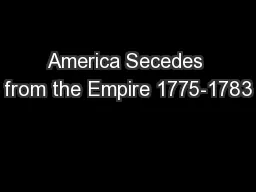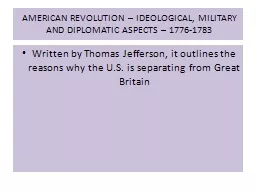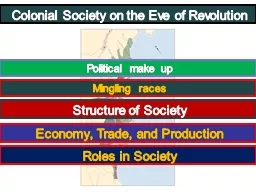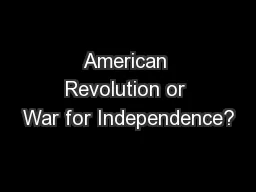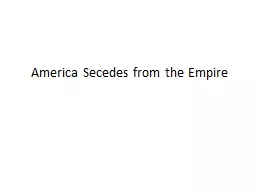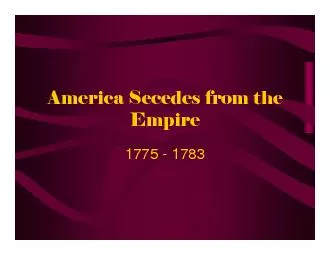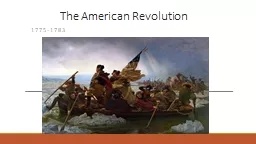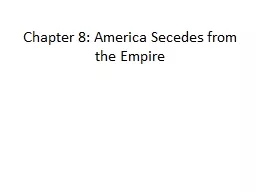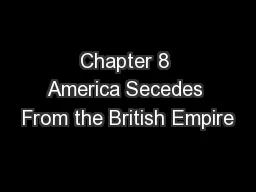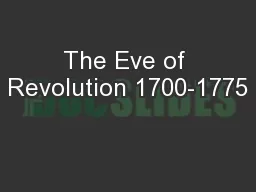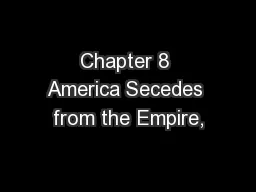PPT-America Secedes from the Empire 1775-1783
Author : olivia-moreira | Published Date : 2017-10-31
Congress drafts George Washington The Second Continental Congress selected George Washington to head the army besieging Boston There were thousands of militia
Presentation Embed Code
Download Presentation
Download Presentation The PPT/PDF document "America Secedes from the Empire 1775-178..." is the property of its rightful owner. Permission is granted to download and print the materials on this website for personal, non-commercial use only, and to display it on your personal computer provided you do not modify the materials and that you retain all copyright notices contained in the materials. By downloading content from our website, you accept the terms of this agreement.
America Secedes from the Empire 1775-1783: Transcript
Download Rules Of Document
"America Secedes from the Empire 1775-1783"The content belongs to its owner. You may download and print it for personal use, without modification, and keep all copyright notices. By downloading, you agree to these terms.
Related Documents

